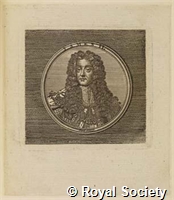| Authorised form of name | James II (1633 - 1701); King of Great Britain and Ireland |
| Other forms of name | James, Duke of York |
| Dates | 1633 - 1701 |
| Nationality | British |
| Place of birth | St James's Palace, London, England, Europe |
| Date of birth | 14 October 1633 |
| Place of death | Chteau de Saint-Germain-en-Laye, France, Europe |
| Date of death | 6 September 1701 |
| DatesAndPlaces | Baptism:
St James's Palace, London, England, Europe (24 November 1633)
Burial:
Church of the English Benedictines, Paris, France, Europe |
| Activity | Career:
Imprisoned by the Parliamentary Commissioners (1646-1648); escaped and remained in exile (1648-1660); served in Turenne's Army in France (1652-1655); served in the Spanish Army in Flanders (1657-1658); Lord High Admiral of England (1660); Governor of the Royal African Company (c1664); Granted the patent of New Amsterdam (then renamed New York) (1664); commanded the English Fleet against the Dutch (1665); Converted to Roman Catholicism (c1672); Sent into exile in Brussels (1679); High Commissioner for Scotland (1679-1685); succeeded his brother as King of England and Ireland (1685); deposed and went into exile in France (1688)
|
| Membership category | Royal Fellow |
| Date of election | 09/01/1665 |
| Relationships | Parents: King Charles I and Henrietta Maria of France
Siblings: Charles II (FRS 1665)
Married: 1) Anne Hyde; 2) Mary of Modena
Children: multiple illegitimate and legitiamte, including Queen Mary II; Queen Anne
Additional relatives: father-in-law Edward Hyde (FRS 1665) |
| OtherInfo | James II was officialy elected on the same day as his brother Charles II but was not active in the Society's work and activities. James' legacy and the influence of his government are a source of wide-ranging discussions amongst historians, in particular about his stance on religious toleration and his characterisation as a absolutist monarch.
James was governor of the Royal African Company (RAC), a British trading company established by Royal Charter in 1660 which enslaved and sold African people. The company was chartered by Charles II, the founding royal Patron of the Royal Society, which was also chartered in 1660. The RAC was made up of and funded by members of the Stuart royal family and London merchants many of whom were, or went on to become, Fellows of the Royal Society. The Royal Society itself held shares in the company from 1682 until 1699. |
| Related images | Discover a selection of related images in our picture library |
| Image | 
|
| Source | Sources:
Bulloch's Roll; DNB; ODNB
References:
Cook, A. '1703 and other anniversaries', in Notes and Records, vol. 57, pp. 1-2
Govier, M. 1999. 'The Royal Society, Slavery and the Island of Jamaica: 1660-1700', in Notes and Records, vol. 53, pp. 203-217
McKie, D. 1958. 'James, Duke of York, FRS', in Notes and Records, vol. 13, pp. 6-13
Scott, J F and Hartley, Sir H. 1960. 'William, Viscount Brouncker, PRS (1620-1684)', in Notes and Records, vol. 15, pp. 147-157
Thrower, N J W. 'Samuel Pepys FRS (1633-1733) and The Royal Society', in Notes and Records, vol. 57, pp. 3-13
Notes:
There are multiple places of burial as his body was dissected to be buried in various churches, including the Scots College in Parish and the nunnery at Chaillot. |
| Virtual International Authority File | http://viaf.org/viaf/3265477 |
| Code | NA7819 |